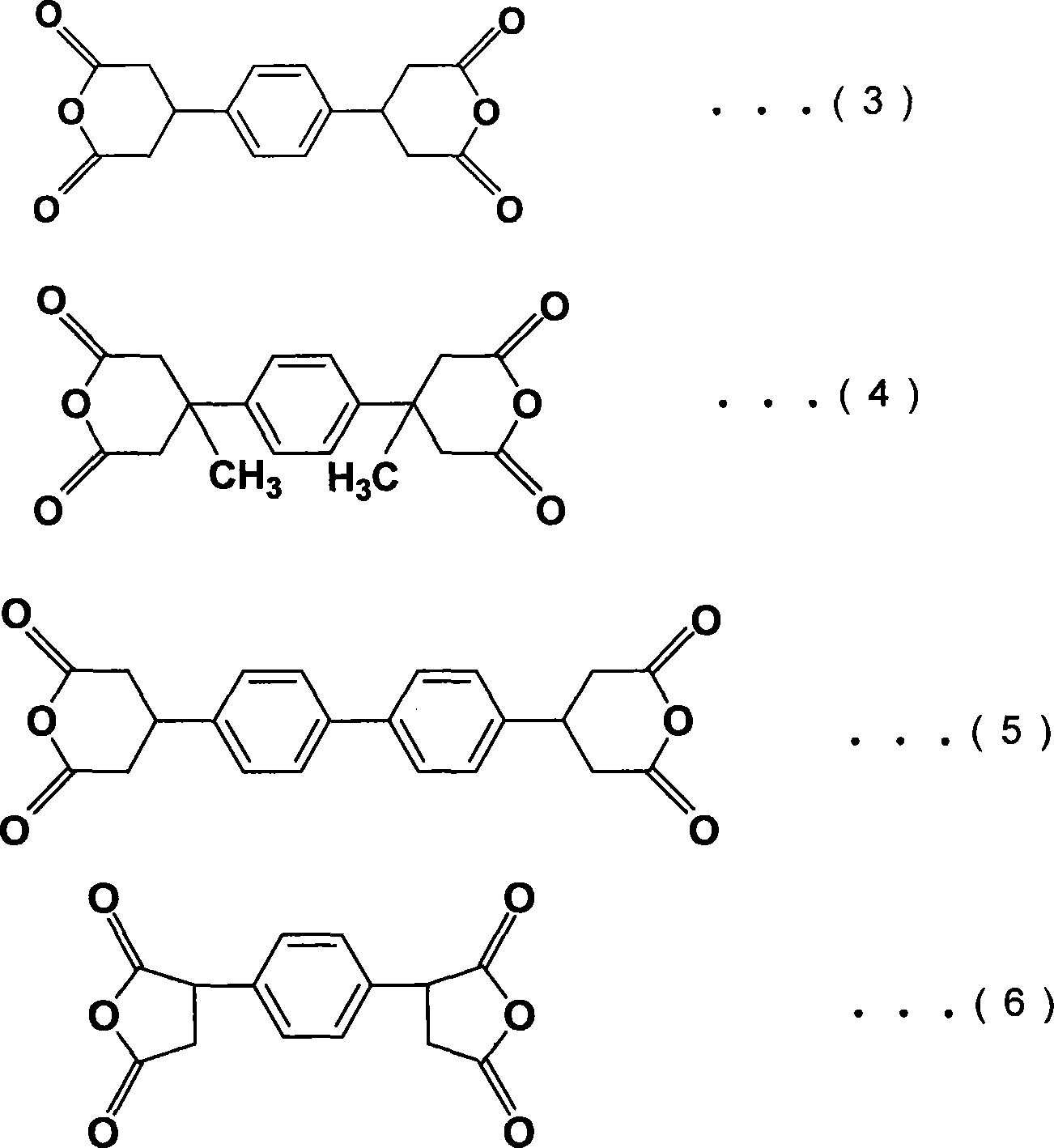Liquid crystal orientational agent and liquid crystal display component
A technology of liquid crystal alignment agent and tetracarboxylic dianhydride, applied in liquid crystal materials, chemical instruments and methods, optics, etc., can solve the problem that the improvement effect of voltage retention rate cannot be said to be good enough, and achieve excellent coating properties and high voltage The effect of retention
- Summary
- Abstract
- Description
- Claims
- Application Information
AI Technical Summary
Problems solved by technology
Method used
Image
Examples
Embodiment
[0108] Hereinafter, the present invention will be described in more detail through examples, but the present invention is not limited to these examples. The imidization ratio, voltage retention ratio, and printability in the examples and comparative examples were evaluated by the following methods.
[0109] [Imidation rate]
[0110] After the polymer was dried under reduced pressure at room temperature, a superconducting nuclear magnetic resonance absorption device (NMR, manufactured by JEOL Co., Ltd., trade name: EX-90A) was used in deuterated dimethyl sulfoxide (DMSO-d 6 In ), use tetramethylsilane as the reference substance to determine 1 H-NMR. In the data obtained, the imidization rate was calculated by the ratio of the peak area (near 10 ppm) derived from the NH proton in the polymer to the peak area derived from other protons.
[0111] [Voltage retention rate]
[0112] In a time span of 167 milliseconds, a voltage of 5V was applied to the liquid crystal display element, and...
Synthetic example 1
[0115] Synthesis Example 1 (Synthesis of polyamic acid P-1)
[0116] 38.3162 g (0.1709 mol) of 2,3,5-tricarboxycyclopentylacetic dianhydride as tetracarboxylic dianhydride, and pyromellitic dianhydride (0.0570 mol) as diamine compound p-phenylenediamine 18.8610 g (0.1744 mol) and 30.3955 g (0.0581 mol) of the diamine represented by the above formula (14) were dissolved in 400 g of N-methyl-2-pyrrolidone and reacted at 60°C for 4 hours. Next, the reaction solution was poured into a large excess of methanol to precipitate the reaction product. Then, it was washed with methanol, and dried under reduced pressure at 40°C for 24 hours to obtain 88 g of polyamic acid having a logarithmic viscosity of 0.70 dl / g (which is referred to as "Polymer P-1").
Synthetic example 2
[0117] Synthesis Example 2 (Synthesis of imidized polymer P-2)
[0118] 20.8381 g (0.0930 mol) of 2,3,5-tricarboxycyclopentylacetic dianhydride as tetracarboxylic dianhydride, 9.2129 g (0.0852 mol) of p-phenylenediamine as a diamine compound, and the above formula (14 4.9490 g (0.0095 mol) of the diamine represented by) was dissolved in 140 g of N-methyl-2-pyrrolidone, and reacted at 60°C for 5 hours. Next, the reaction solution was poured into a large excess of methanol to precipitate the reaction product. Then, it was washed with methanol, and dried at 40° C. for 24 hours under reduced pressure to obtain 31 g of polyamic acid having a logarithmic viscosity of 0.70 dl / g. 30 g of the obtained polyamic acid was dissolved in 400 g of N-methyl-2-pyrrolidone, 6.3 g of pyridine and 8.1 g of acetic anhydride were added, dehydration and ring closure were carried out at 110°C for 4 hours, and the same precipitation, washing and depressurization were performed as above. 26 g of an imidized...
PUM
| Property | Measurement | Unit |
|---|---|---|
| thickness | aaaaa | aaaaa |
| thickness | aaaaa | aaaaa |
Abstract
Description
Claims
Application Information
 Login to View More
Login to View More - R&D Engineer
- R&D Manager
- IP Professional
- Industry Leading Data Capabilities
- Powerful AI technology
- Patent DNA Extraction
Browse by: Latest US Patents, China's latest patents, Technical Efficacy Thesaurus, Application Domain, Technology Topic, Popular Technical Reports.
© 2024 PatSnap. All rights reserved.Legal|Privacy policy|Modern Slavery Act Transparency Statement|Sitemap|About US| Contact US: help@patsnap.com










